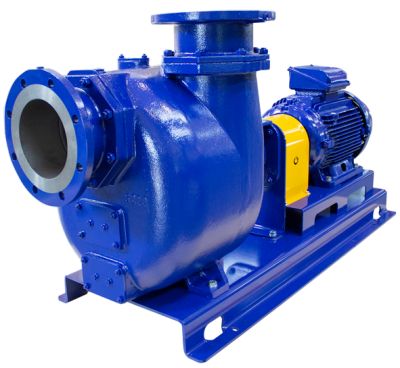
The Victor S series centrifugal pumps are self-priming. The open impeller provides a large free passage. One of the advantages of this type of pump is that it does not need to be submerged in the liquid. The maximum suction lift is determined by the physical conditions of the pumped liquid and can be up to 8 m. As the pump is normally placed dry above or next to the liquid, the suction line contains air.
Working principle self-priming;

The self-priming pump processes all air present in the suction pipe. The pump housing must be filled with water.
A ; The vacuum created when the impeller rotates (2) draws air into (1) the pump where it is mixed with the liquid already in the pump housing.
B; When all air has been removed from the suction line, the liquid will be pumped, even if it contains air. The air / liquid mixture is forced to the discharge side where the air separates and is discharged through the discharge port (3) while the liquid falls back due to the higher gravity and is recycled through a small passage on the suction side.
C; The high suction port keeps enough liquid in the housing to be able to suck again at any time. The non-return valve in the suction port (4) prevents the liquid from flowing back and shortens the suction time.
Versatility is one of the most important features of Victor Pumps.Pump models have been created for different applications in different sectors. Depending on the application and the medium to be handled, the S pumps are available in cast iron, spheroidal cast iron, stainless steel, bronze or aluminum. Furthermore, hybrid versions are available with different material combinations to extend the life of the pump. It is also possible to reinforce the pump with special materials to reduce component wear. For example suitable for highly abrasive particles. There are also many drives available, including various electric motors, combustion engines and even hydraulic motors. A number of models are available with an integrated cutter.
The pumps are available with ATEX certifications "Directive 2014/34 / EU" for areas of Group II, categories 2GD (Zone 1) and 3GD (Zone 2) for temperature classes T1, T2, T3 and T4.








